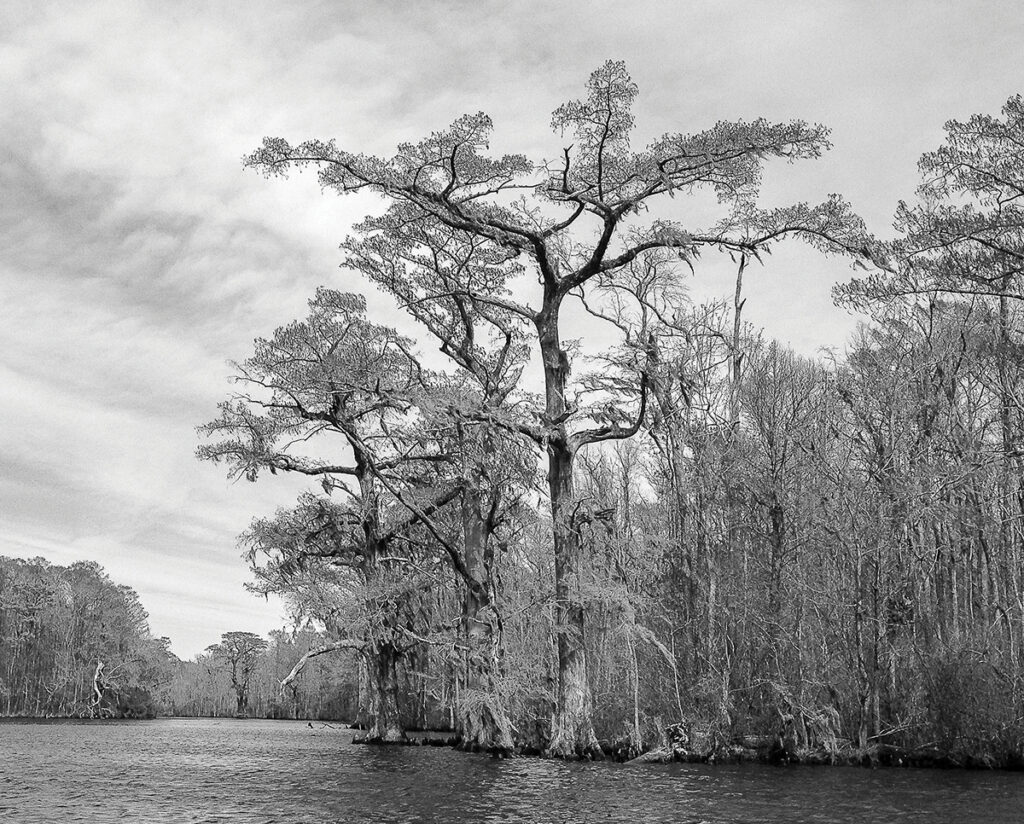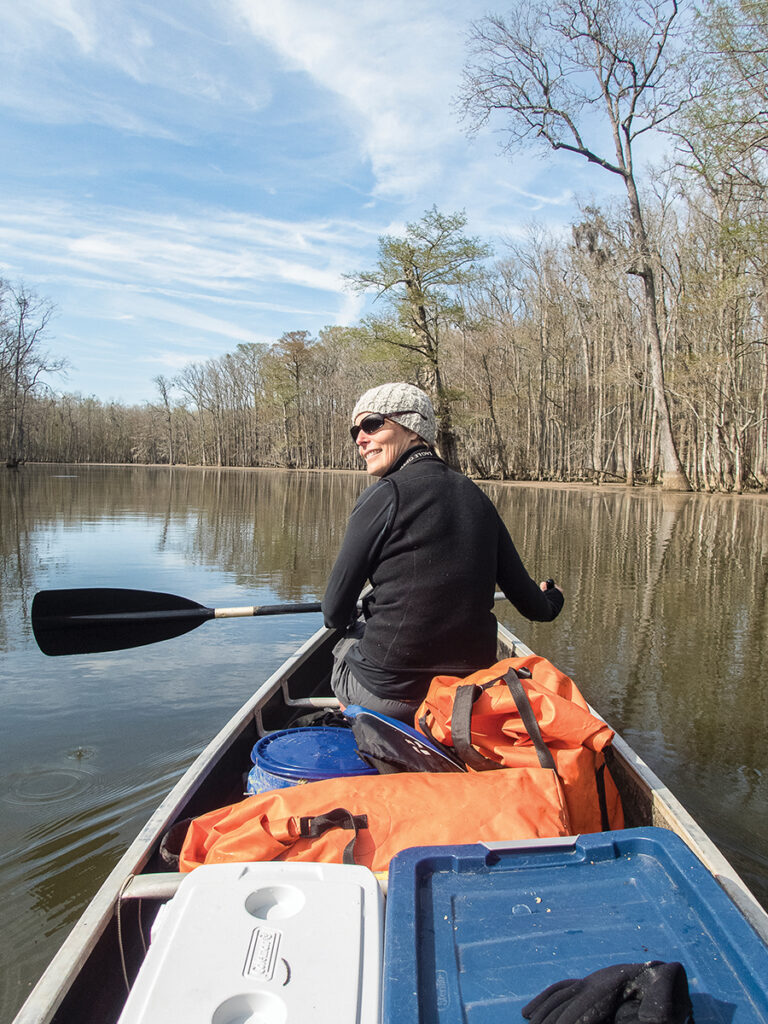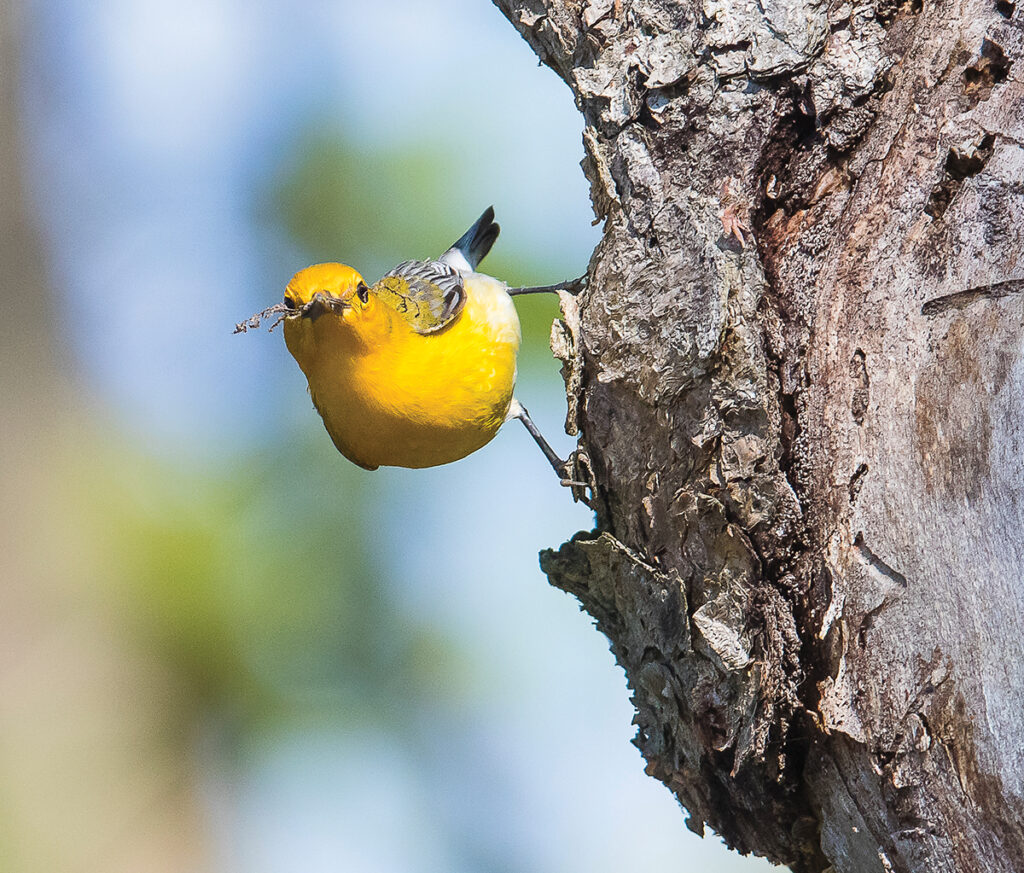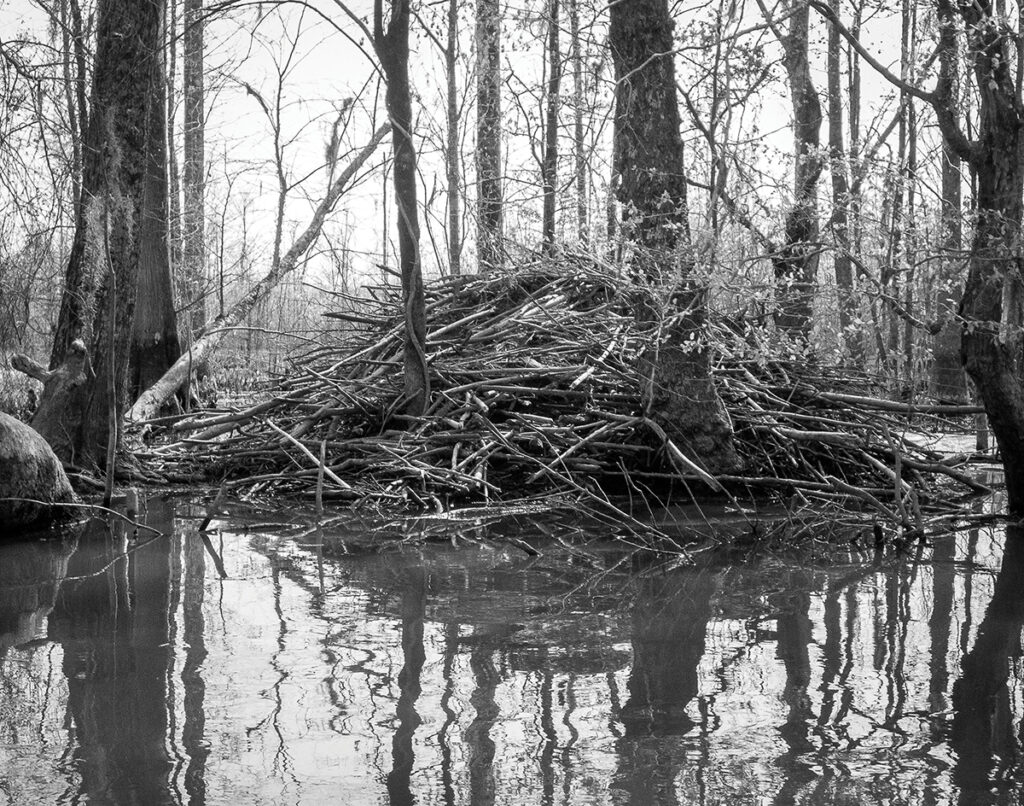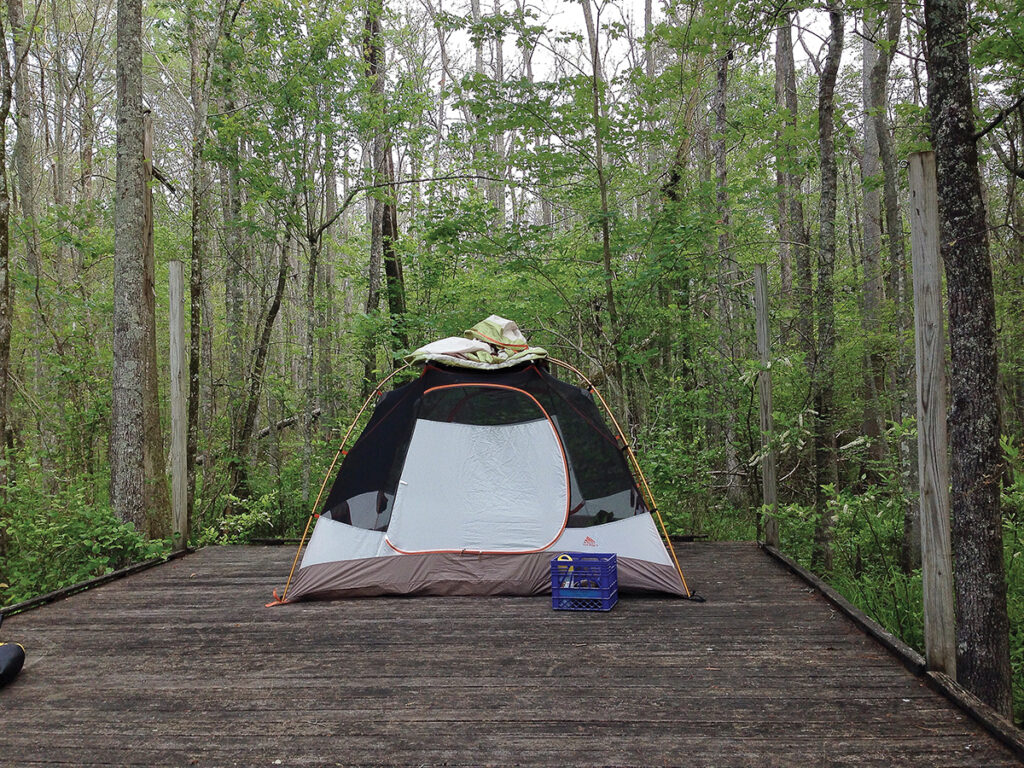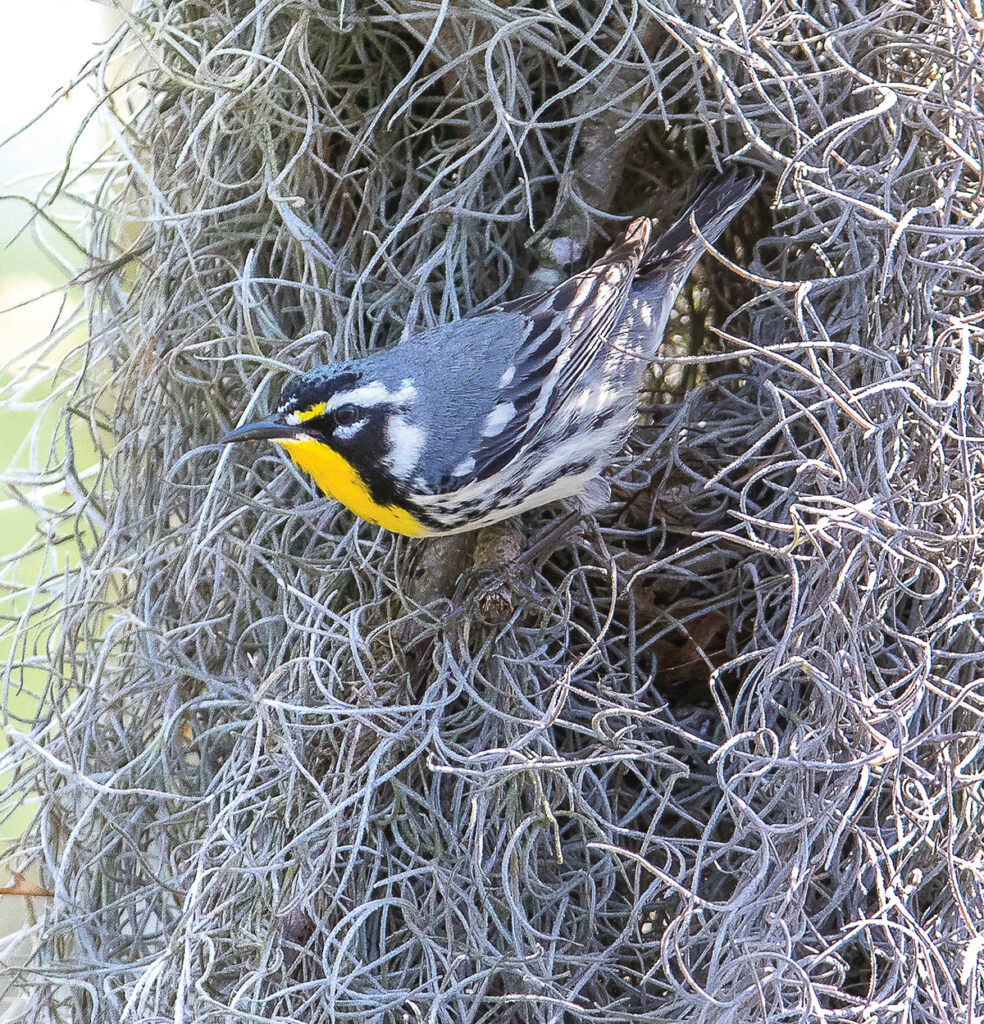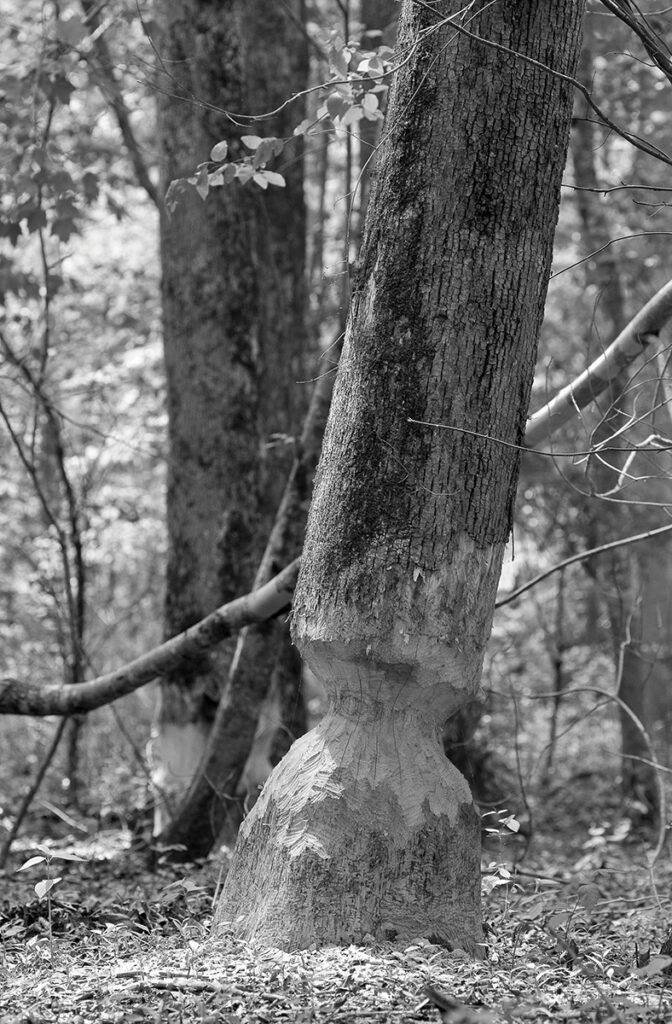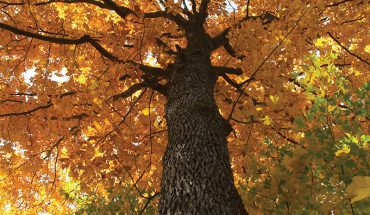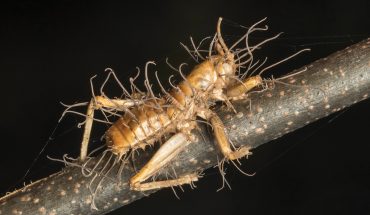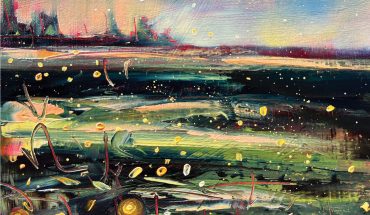Traveling by canoe, this nature writer explores the rich, ecologically diverse area of our state’s swamplands.
Words and photographs by Mike Dunn
It was spring the first time I visited the majestic swamps along the Roanoke River. In my 12-foot aluminum boat and motor, we could cover a lot of river in a day, but still access the shallow areas where you can really get the feel of being in “the swamp.” The vibrant greens, birdsong and the character of the wilderness made this first trip surreal.
This was in the early 1990s, and I was on assignment for the North Carolina Nature Conservancy. At the time, I had a video business, and my partner and I were filming Conservancy projects for some public service announcements.
The Conservancy had played a major role in helping to protect and manage over 50,000 acres of bottomland forests along this river, including lands leading to the creation of the Roanoke River National Wildlife Refuge. Our task was to film the scenery and wildlife of the region.
I have returned many times since, in different seasons. But spring, especially April, is still my favorite. Nowadays, I travel in a canoe or kayak, the best way to experience a swamp. Paddling the Roanoke offers a mix of experiences, depending on your destination. You can be one with a forest of Bald cypress and Water tupelo trees, slowly weaving your way through the shallows, surrounded by all manner of interesting plant and animal life.
Or you can be on the river proper, where you come to understand the vastness of this unique environment, which is considered the largest intact and least disturbed bottomland forest ecosystem remaining on the East Coast.
The Roanoke carries more water than any other North Carolina river, draining lands from the mountains and Piedmont of Virginia and North Carolina as it flows over 400 miles to empty into our Albemarle Sound.
It also has the widest floodplain, up to 5 miles in some places. And it is a rich, ecologically diverse area, especially the lower Roanoke, below three dams that were built in the mid-1950s to help control the floods that led Native Americans and early settlers to call Roanoke the “river of death.”
But it is a river of life with incredible historical springtime runs of striped bass, American shad and river herring, fish that still migrate upriver from the ocean but are limited to the areas of river below the dams. It also hosts abundant game animals such as white-tailed deer, black bear and wild turkey, as well as the highest density of nesting birds anywhere in the state.
My early experiences on the river led me to create an educator workshop during my museum years called “Secrets of the Swamp.” We’d paddle and camp on a portion of the lower Roanoke, which has over 20 camping shelters and platforms managed by a nonprofit, Roanoke River Partners (roanokeriverpartners.org).
A few sites are on land adjacent to the river, but my favorites are out in the swamp proper — wooden platforms perched above the dark waters teeming with life and surrounded by majestic trees. Camping reservations are required and can be made on their website.
It also has additional information such as what to bring (this includes your own latrine for the swamp platforms), launch sites, paddle distances and other details to help you plan a trip. And the staff of Roanoke River Partners are happy to assist if you contact them. They are a true recreational resource treasure for our state.
Two years ago, the NC General Assembly authorized the Roanoke River State Trail, a paddle trail extending from Weldon to the Albemarle Sound. This designation brings more recognition to its many recreational opportunities and provides much needed funding for improvements including camping platform repairs and upgrades.
I’ve had many adventures on a section of river that includes a large side channel known as Devil’s Gut. My go-to launch site until a few years ago was Roberson’s Marina on Gardner Creek. Calling it a marina was generous; it was really a bait shop near a blackwater creek run by a gentle lady named Carolyn.
She would rent you a canoe and provide the required portable toilet, which varied over the years in “design,” usually consisting of a 5-gallon bucket and a plastic bag filled with kitty litter.
Carolyn always had a smile and stories of river life. One time, I dropped my own canoe at the marina, then joined a group for lunch nearby. While I was gone, she accidentally loaned my canoe to another group. She was mortified, but I told her not to worry. I took one of her rentals for our excursion, then we ended up talking for hours waiting for mine to come back.
Afterward, Carolyn sent me a sweet apology note along with an invitation to her family reunion picnic that summer — she said I felt like family, having spent so much time together.
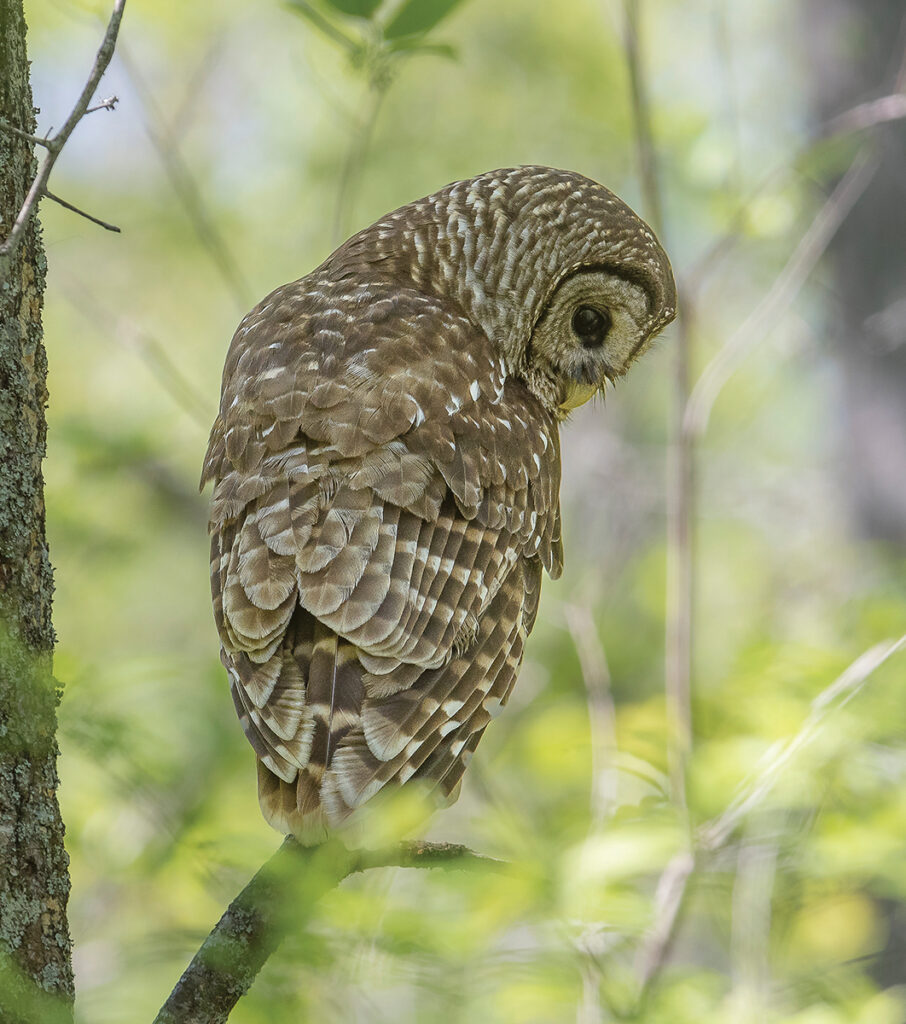
Another time, I walked in to the marina and asked how she was doing. “Well, I’ve been eating Spam and watching Elvis, what a Sunday I have had!” she said, as if all was right with her world. Sadly, she passed away in 2007. Her brother took over the business, but when he passed, the launch site closed to the public. Now the closest access site to the Gut and Gardner Creek is the NC Wildlife Resources public boat ramp in Jamesville.
When you paddle the Gut or the side creeks of the river, the swamp seems to reach out to your canoe and embrace it. Paddling invites quiet; my wife, Melissa, and I often go 20 or 30 minutes without saying a word. I suppose it’s part of the process of clearing your head and being connected to the place. It allows us to focus on our surroundings, to listen, and to see things we might otherwise miss.
Our main companions on any April paddle are the birds, both the year-round species and the migratory ones, many having just arrived to begin their breeding season. Swamp birds include Anhinga, Great Blue herons, osprey, bald eagles, red-shouldered hawks, wood ducks, various woodpeckers and many species of warblers.
Northern Parulas and yellow-throated warblers call from the treetops. Both make their nests in hanging clumps of Spanish moss. Darting seemingly everywhere through the swamp are the so-called “swamp canaries,” the brilliant yellow Prothonotary warblers, our only cavity-nesting warbler.
Male Prothonotaries arrive first on the breeding grounds and begin setting up territories they will defend. They select a few choice nesting cavities and stuff them with moss, hoping a female will approve of one. They are bold little birds and will often allow a close approach to fully appreciate their beauty.
Paddling the Roanoke during the day is special, but being on a platform in the swamp after dark is magical. You can sit and appreciate the change in soundscape as the day shift takes refuge and the night shift comes on duty.
Soon, you may hear the evening serenade of the barred owls asking “who cooks for you, who cooks for you all?” or engaging in a cacophony of squeals and hoots that sound more like monkeys than birds. And around you are occasional splashes and sounds of unknown creatures engaging in their nighttime rituals — mating fish, calling frogs, beaver tail slaps.
One of the activities we did in our workshops was to ask the participants what words they think of when they hear the word “swamp.” Invariably, for some it conjures up fearful images with words like spooky, dark, buggy, snakes — a place to avoid. But when asked the same questions at the end of our trip, the sentiment was almost always much more positive: pristine, wilderness, peaceful, beautiful, alive.
For my wife and me, and many of the people we have shared the swamp with, it is a place of refuge, a place to quietly paddle with our thoughts, and to create a feeling of being connected to something wild and free.
This article originally appeared in the April 2023 issue of WALTER magazine.

